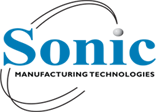
Why Flex PCBs are Best for Medical Devices and Applications
The medical industry works hard every day to save the lives of children and adults. Thanks to dedicated working professionals, innovative medical devices and advanced technology, people worldwide are living longer. And one of the ways that technology is keeping up is through rigid-flex and flexible printed circuit boards (PCBs).
PCBs are the platform for your circuitry, allowing medical devices like heart monitors, blood glucose monitors and IV therapy infusion pumps to work. Frequently, rigid PCBs usually won’t fit in medical applications because the devices need the PCBs to be small, lightweight, efficient and fit in unstructured or compressed enclosures. This is where rigid-flex and flex PCBs come into the picture.
What are Flexible Printed Circuit Boards?
Rigid PCBs are inflexible circuit boards, while flex PCBs are made of materials that can be bent to fit into moveable, stacked, or unique enclosure designs. Depending on the applications, flex PCB’s can be bent once for squeezing into tight spots, or design for hundreds of thousands of bending cycles without problems. In exchange for these features, flex boards may come at a higher price than rigid PCBs but provide design and functional flexibility.
Despite the higher cost, medical applications often have no choice but to use flex PCBs due to the following benefits:
- Flexibility. Flexible circuits can be bent, folded or creased to fit any application, including wearable devices. This means that you don’t have to build the design around the PCB.
- Connectivity. Flex circuit boards provide greater connectivity between other circuit boards and electronic components, making it a great fit for medical devices.
- Lightweight. Using a lightweight PCB makes the product lighter in weight as well, something that patients and consumers prefer.
- Durability. Even though flex PCBs are not as thick or strong as rigid ones, they absorb shock and vibrations more effectively.
- Resistance. Finally, flex circuits are much more resistant to heat, chemicals and radiation, making them a good choice for temperature-sensitive conditions.
Medical Applications that Use Flex Circuits
Now that you’re aware of why flexible printed circuit boards are a top choice for today’s medical devices, let’s look at some of the applications that are already using and benefitting from them:
- Pacemakers
- Defibrillators
- Imaging equipment
- Drug delivery systems
- Cochlear implants
- Wireless controllers
- Handheld monitors
Sonic Manufacturing has over 20 years of proven history in the medical and biotech markets. We have everything you need to design and manufacture the very best printed circuit boards for your applications. Contact us today to discuss PCB assembly and manufacturing for medical devices.
CALL FOR A QUOTE
(510) 580-8500
OR EMAIL:
Sales@Sonicmfg.com
